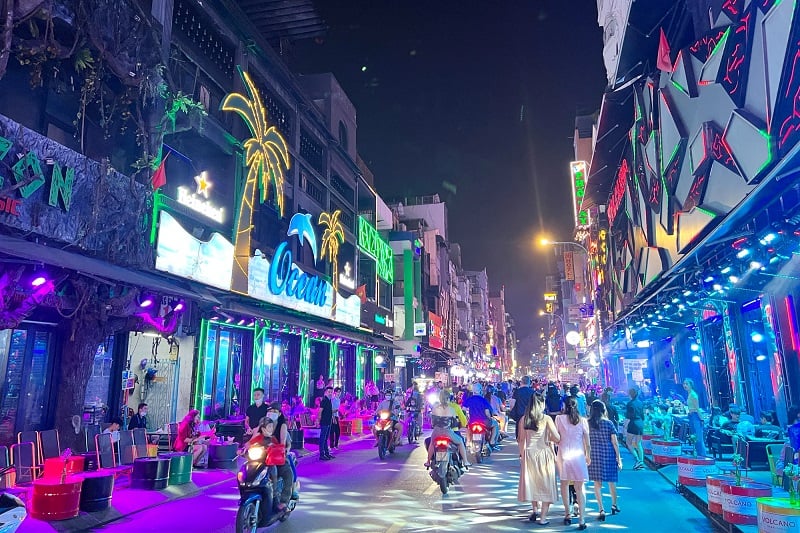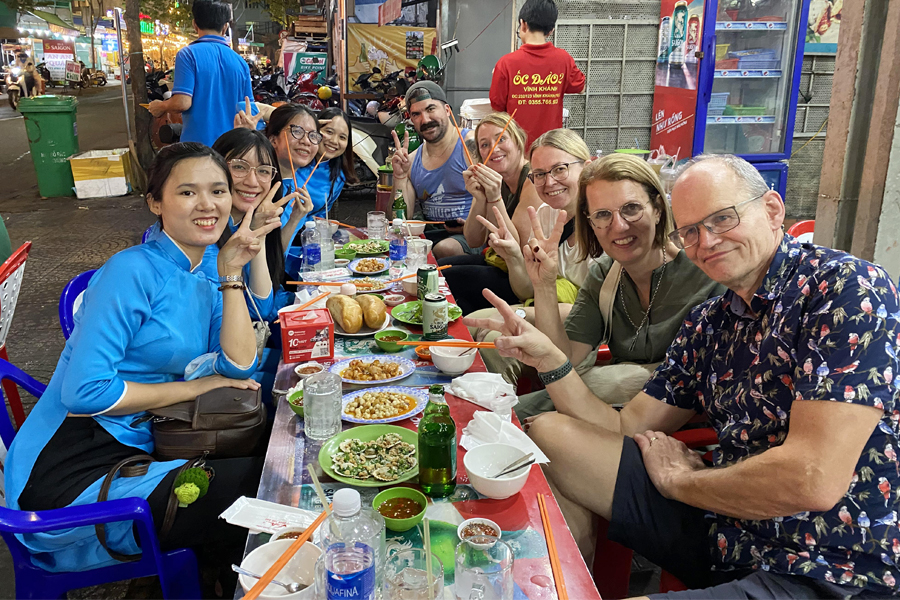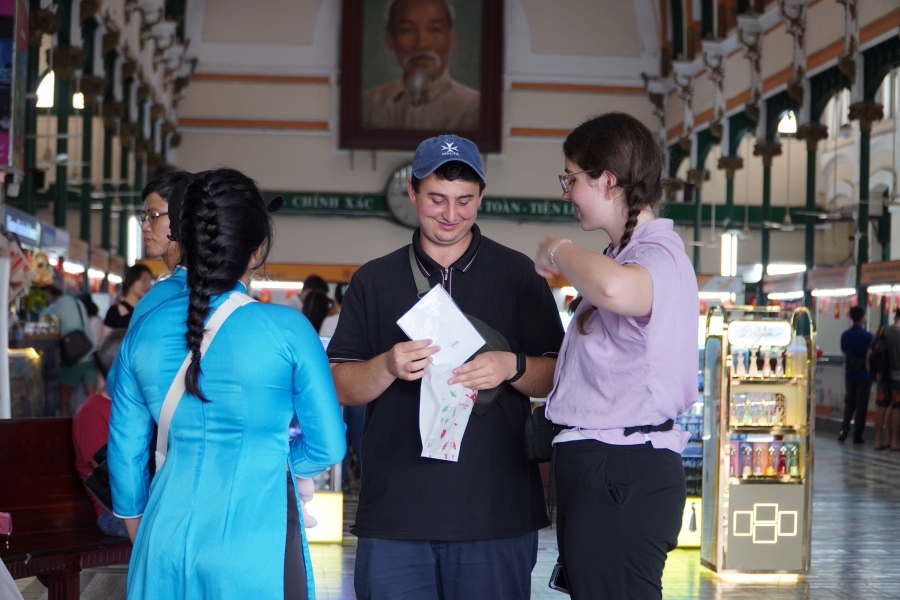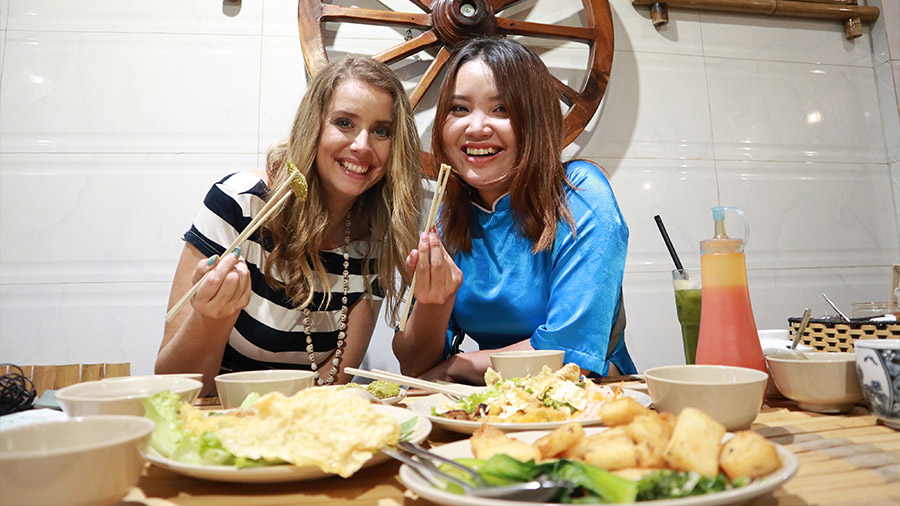Stepping into the History Museum of Ho Chi Minh City is like stepping back in time. This captivating museum houses a vast collection of artifacts that tell the story of Vietnam, from its prehistoric origins to its modern-day triumphs.
1. The History and Development of the History Museum of Ho Chi Minh City
The History Museum of Ho Chi Minh City has quite a story to tell and it’s actually one of the oldest museums in Southern Vietnam.
The museum was first established way back in 1929, but it wasn’t always called the History Museum. Initially, it was known as the Blanchard de la Brosse Museum, named after the French governor of Cochinchina (that’s what they called Southern Vietnam back then).
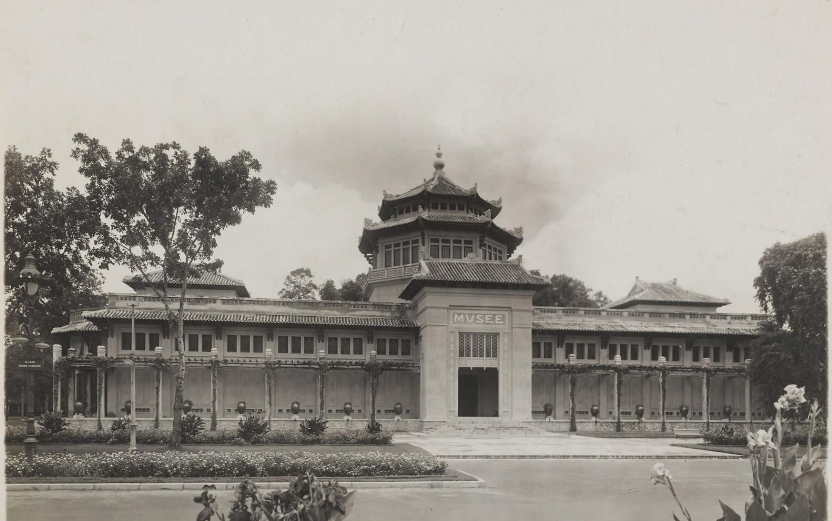
The old History Museum of Ho Chi Minh City. | Source: baotanglichsutphcm.com.vn
It was renamed the National Museum of Vietnam in Saigon and started showcasing ancient art from various Asian countries in 1956.
In 1976, Saigon was named Ho Chi Minh City. No longer that, the museum officially became the History Museum of Ho Chi Minh City in 1979. And just a few years ago, in 2012, this beautiful building itself was recognized as a National Architectural and Artistic Heritage Site.

This beautiful building, now the History Museum of Ho Chi Minh City, has been designated a National Architectural and Artistic Heritage Site | Photo: visithcmc.vn
Today, the museum houses an incredible collection of around 40,000 artifacts. These objects tell the story of Vietnam’s history and culture, from prehistoric times all the way to 1945. It’s a fascinating journey through time, and you’ll see some truly remarkable things inside.
>>> Read more: War Remnants Museum
2. Essential experiences at the History Museum of Ho Chi Minh City
2.1. Discovering the museum’s outdoor spaces
When you step outside the museum, you’ll notice some large cannons on display in the courtyard. These cannons date back to the 18th and 19th centuries.
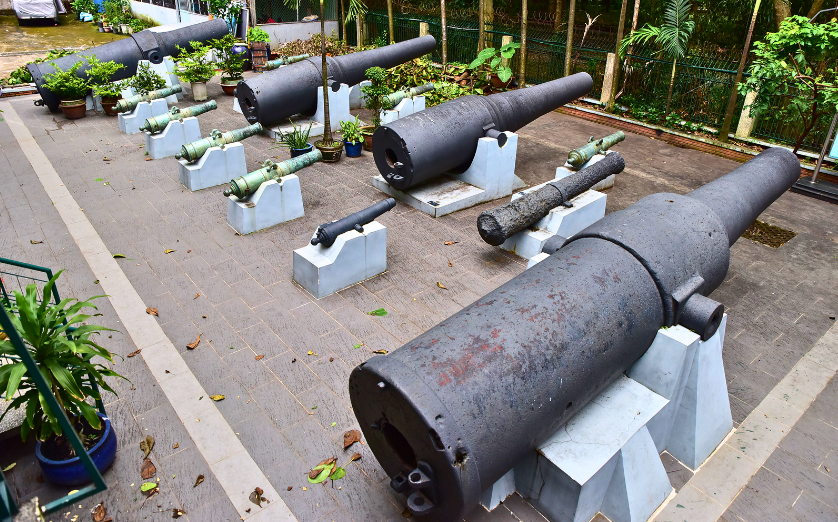
The outdoor space of the History Museum showcases historic cannons from the 18th and 19th centuries. | Photo: 24h.com.vn
They were made from bronze, iron, or cast iron, and they fired solid cannonballs made of iron. As you can imagine, these cannons were very powerful and destructive weapons in their time.
2.2 Inside the Ho Chi Minh City Museum of History
Room 1 – Prehistoric Period (500,000 years ago – 2879 BCE): Exhibits include early human artifacts, such as human teeth found in caves in Lang Son (a province in Northern Vietnam) and primitive stone tools from Thanh Hoa and Dong Nai, indicating human presence across Vietnam 500,000 years ago.
Room 2 – Formation and Defense of the Nation (2879 BCE – 938): This period features the foundational cultures of Vietnam: Dong Son (Van Lang – Au Lac), Sa Huynh (predecessor to Champa), and Oc Eo (predecessor to Funan).
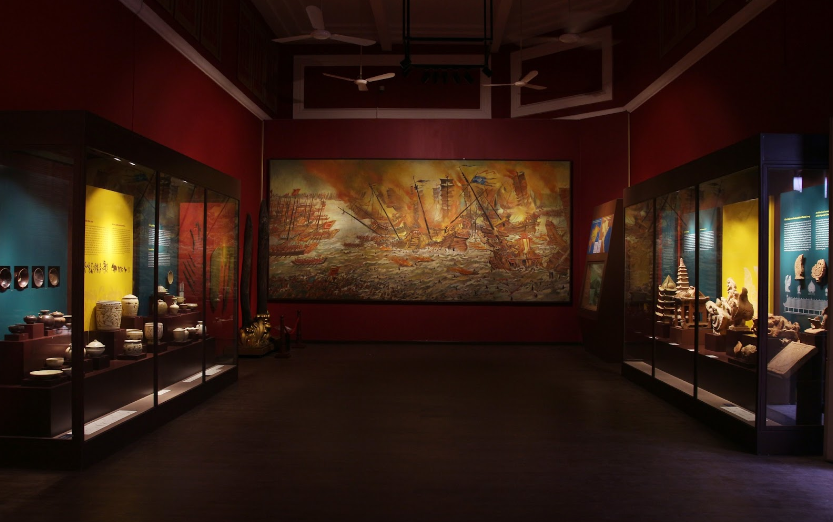
Step back in time at the Ho Chi Minh City Museum of History, where you can explore the development of Vietnam from the Stone Age to the Nguyễn Dynasty. | Photo: visithcmc.vn
Room 3 – Ngo, Dinh, and Early Le Dynasties (939 – 1009): After the victory at the Battle of Bach Dang in 938, Ngo Quyen established his rule, followed by the unification efforts of Dinh Bo Linh in 968.
Room 4 – Ly Dynasty (1009 – 1225): This period highlights the prosperity of the Ly Dynasty, with displays of cultural, legal, religious, and economic advancements, illustrated by artifacts such as plates, teapots, lotus-shaped objects, and relics.
Room 5 – Tran and Ho Dynasties (1226 – 1407): The Tran Dynasty, inheriting the legacy of the Ly, saw the development of arts and the introduction of the Nom script in literature.
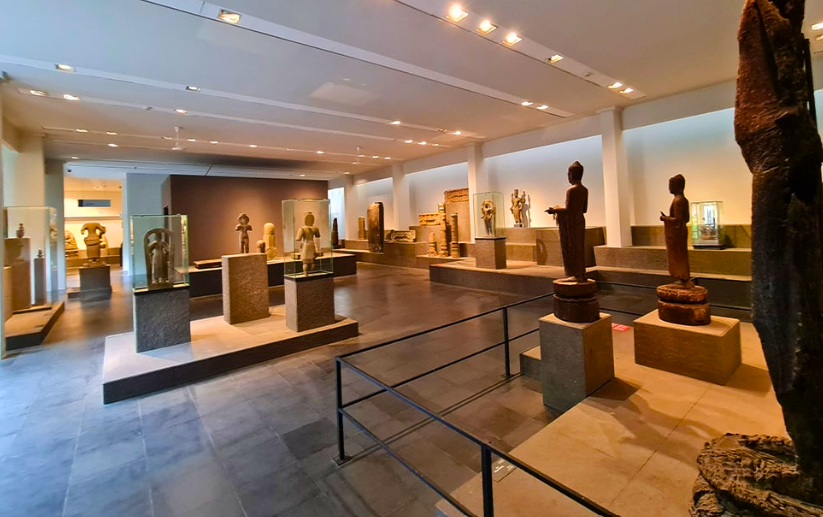
Uncover the story of Vietnam’s evolution, from the earliest civilizations to the Nguyễn Dynasty | Photo: nhadat.cafeland.vn
Room 9 – Early Le, Mac, and Later Le Dynasties (1428 – 1788): After the Minh occupation, Le Loi’s Lam Son uprising reclaimed sovereignty, leading to economic reforms and the emergence of Quoc Ngu script. The Mac Dynasty later disrupted national unity.
Room 10 – Tay Son Dynasty (1771 – 1802): The Tay Son uprising mobilized the population, overthrew the Nguyen lords, and reformed the nation. Displayed here are coins like “Canh Thinh Thong Bao”, “Thai Duc Thong Bao”, and “Quang Trung Thong Bao”.
Room 12 – Nguyen Dynasty (1802 – 1945): The Nguyen Dynasty made efforts toward unification and cultural development but capitulated to French colonization. Exhibits trace the anti-colonial struggles and the founding of the Indochinese Communist Party in 1930, leading to the August Revolution in 1945 and the establishment of the Democratic Republic of Vietnam.
>>> Read more: Things to Do in Ho Chi Minh City with Family 2025
2.3 Discover the cultures of southern Vietnam and other Asian countries inside the Ho Chi Minh City Museum of History
Room 6 – Champa Culture (2nd – 17th Century): The museum holds one of the largest Champa art collections globally, with the standout piece being the Devi Huong Que statue.
Room 7 – Oc Eo Culture (1st – 7th Century): The Oc Eo culture is noted for its intricate craftsmanship, featuring gold, bronze, tin, semi-precious stones, and glass beads jewelry.
Room 8 – Cambodian Stone Sculpture (9th – 13th Century): This period marks the peak of Cambodian art, blending Buddhist and Brahmin influences in its stone sculptures.

The Ho Chi Minh City Museum of History exhibits the beautiful craftsmanship of Champa culture with ancient terracotta statues, jars, and pottery pieces | Photo: dulichthuduc.com.vn
Room 13 – Duong Ha Collection: This extensive collection was gathered by Professor Duong Minh Thoi and his wife Ha Thi Ngoc during the 1930s-1940s, featuring items like lacquered wooden altar boxes from the early 20th century.
Room 14 – Asian Ceramics: Exhibits include ceramics from China, Japan, Thailand, Cambodia, and Vietnam, showcasing the diverse pottery traditions across Asia.
Room 16 – Vuong Hong Sen Collection: This room showcases over 800 artifacts collected by renowned researcher Vuong Hong Sen (1902 – 1996), including items from Vietnam, China, Cambodia, Japan, Thailand, and France, dating from the 10th to 14th centuries.
3. What you need to know before visiting the History Museum of Ho Chi Minh City
3.1. Address and Opening Hours
- Location: 2 Nguyen Binh Khiem Street, Ben Nghe Ward, District 1, Ho Chi Minh City
The History Museum of Ho Chi Minh City welcomes visitors from Tuesday to Sunday, opening hours:
- Morning: 8:00 AM to 11:30 AM
- Afternoon: 1:00 PM to 5:00 PM
***Please note that the museum is closed on Mondays.
3.2 History Museum of Ho Chi Minh City Admission Fees
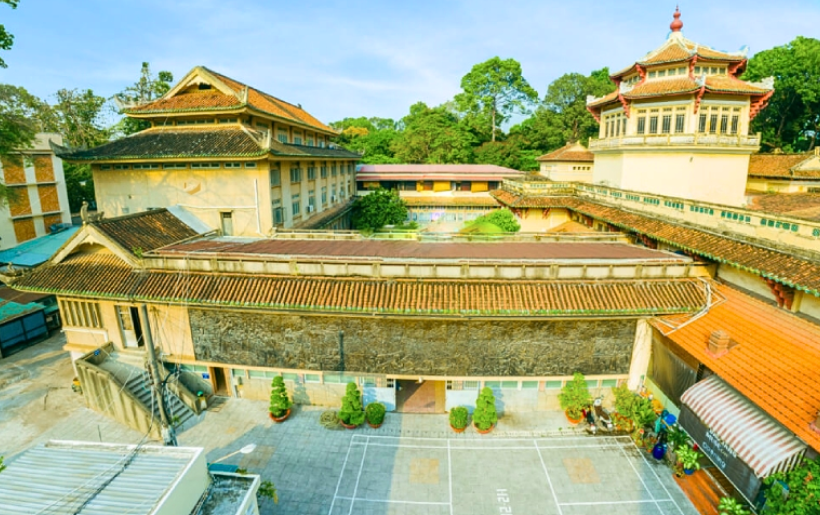
The History Museum of Ho Chi Minh City offers affordable admission fees, making it accessible for visitors of all budgets | Photo: dulichthuduc.com.vn
- Standard Ticket: 30,000 VND (approximately USD 1.25) per person.
- Free Admission: Children under 6 years old, people with disabilities, and individuals with poverty certificates can enter free of charge.
***Children under 16 years old, students, seniors over 60 years old, and individuals with special circumstances (such as war veterans or labor heroes) are eligible for a 50% discount on the ticket price.
3.3. Museum Regulations
To ensure a pleasant and respectful experience for all visitors, please adhere to the following regulations:
- Dress Code: Dress modestly and respectfully when visiting the museum.
- Prohibited Items: Do not bring flammable or explosive items, weapons, or any materials that could pollute the museum environment.
- Food and Drinks: Refrain from bringing food and drinks inside the museum. Please maintain cleanliness and avoid making loud noises.
- Respect for Exhibits: Do not touch the artifacts or historical equipment on display. Please do not enter any restricted areas.
4. Do you need a local guide when visiting the History Museum of Ho Chi Minh City?
When visiting the History Museum of Ho Chi Minh City, whether you need a local guide depends on your preferences. The museum does offer English-speaking guides and detailed English descriptions for most exhibits, which makes it easy for international visitors to understand the displays. In this case, having a tour guide is not strictly necessary.
5. Seeking a deeper exploration or a more personalized experience? Having a local guide can be highly beneficial
The locals can provide additional insights and accompany you to explore nearby attractions or other parts of Saigon. Some fascinating destinations close to the museum that you can easily reach by motorbike: Independence Palace (1km away), Ben Thanh Market (3km away), Saigon Zoo and Botanical Gardens (100m away).
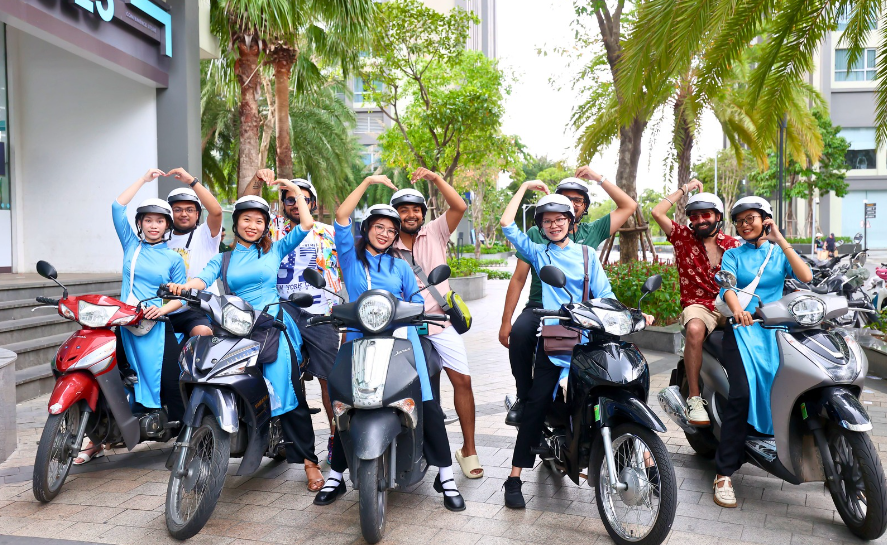
Discovering nearby landmarks from the History Museum of Ho Chi Minh City with a local guide on a motorbike.
To experience these sights like a true Saigonese, consider booking a Ho Chi Minh motorbike tour. Services like KissTour offer personalized tours led by expert local female drivers, allowing you to weave through the city’s vibrant streets and soak in the atmosphere firsthand. These customizable tours are the perfect complement to your museum visit, offering a unique and memorable exploration of the city.


